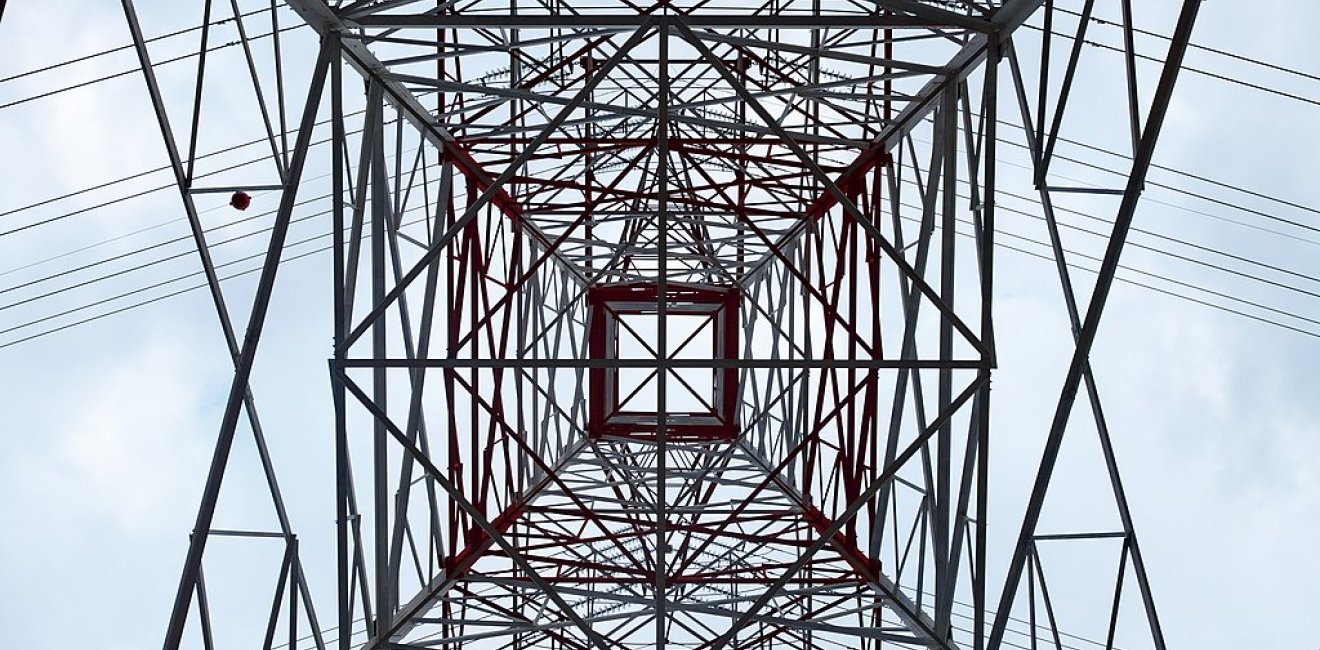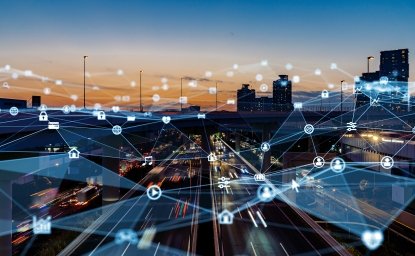
A blog of the Science and Technology Innovation Program
Energy underpins every aspect of a modern economy. It is this enabling function that makes our national energy infrastructure uniquely critical even amongst the broader set of critical infrastructure sectors. Importantly, technological shifts—such as the ongoing development and deployment of 5G and later 6G networks—place novel, evolving energy demands on energy infrastructure. The future ability of our electricity grids to fully meet those demands should not be taken for granted. Why? Energy grids are historically sticky (difficult, costly, and time-consuming to change).
Policymakers and industry alike have a unique moment of opportunity in front of them as the United States prioritizes and navigates its transition toward clean energy: an opportunity to ensure that our energy grids are deliberately designed and built with the needs of the future in mind.
A Window of Opportunity: The Clean Energy Transition
The original electric grid was not designed at a single point in time; it evolved over decades. The result was a hierarchical grid structured to send electrons in one direction. Power flowed from large, centralized generation facilities via major transmission lines to smaller-scale distribution and finally consumption in a home or business.
A transition to clean energy means that architecture must rapidly change to support a more diverse, distributed, and variable energy system, one in which electrons flow in every direction. In the grid of the future, power could flow during the day from a homeowner’s solar panels to the battery in a neighbor’s charging electric vehicle. Later that night the unused power in that electric vehicle’s battery could be dispatched to power diagnostic equipment at a nearby urgent care. Grid flows like these will require new technologies, new market structures, and new regulatory approaches.
Utilities and policymakers are already planning how to update the electric grid for this dynamic clean energy future. It is likely to be a challenging transition; the correct functioning of the grid requires well-structured market mechanisms and a careful balance of supply and demand to avoid catastrophic breakdowns like those seen in California in 2000-2001 or Texas in 2021. Absent careful planning and cross-sector dialogue, the grid may experience a period not just of rapid change, but also of instability—at least relative to the extremely high standards the developed world expects from electricity supply.
Enabling the Future: The Shifting Energy Demands of Telecommunications Networks
Meanwhile, several parallel technology transformations—such as the emergence of 5G telecommunications networks, electric vehicles, and other new technologies—are occurring that will shape future patterns of electricity consumption. This presents both an opportunity and an additional challenge for grid evolution.

5G networks, for example, promise the ability to alter (i) the number of possible devices (massive machine to machine communications enabling an explosion of networked devices), (ii) the criticality of tasks those devices can feasibly support (from remote surgeries to driverless cars), and (iii) where those devices can be located (including urban, rural, remote, and devices on the move). All three of these trends will place pressure—specifically on the reliability and load capacity of grids across diverse geographic locations—on the energy sector.
The evolving telecommunications sector would place this pressure on existing energy grids even if the clean energy transition were not underway. For example, if 5G is going to enable innovations “where reliability and responsiveness are mandatory” like fully autonomous vehicles and remote surgery, then the energy systems undergirding those technologies must also be highly reliable. Unfortunately, an analysis by the Wall Street Journal found that significant and sustained power grid outages in the United States increased from approximately 20 in 2000 to more than 180 in 2020.
Notably, the degree to which existing energy architectures will fall short of future demand enabled by 5G and then 6G networks remains an open question, one which requires additional research and attention. Even in new use-cases that are already receiving policy attention and support—such as the bipartisan infrastructure bill’s funding for electric vehicle charging stations—more collaboration will be needed to understand how associated changes in demand could strain the electric grid.
Seizing the Moment: A Call to Action
Mind the Gaps: It will be critical for policymakers and industry strategists alike to assess how the energy demands of their “enabled” sectors are evolving over time. For example, is the geography/structure of 5G energy usage the same as the geography of a low-carbon smart grid? Is a low-carbon smart grid going to be well-adapted to serve 5G’s specific needs in terms of demand and reliability? 5G is potentially one of the most important networks of the 21st century. Yet, the degree to which we can capture the promise of these networks rests heavily on how effectively we identify gaps in the capacity of our evolving energy grids.
Find Synergies: Telecommunications is just one sector of many enabled by the energy sector. Importantly, technological transformations are occurring across our critical infrastructure and services more broadly, including transportation with electric vehicles. Rather than assessing each in isolation, can we do so holistically? For instance, how will the geographical distribution of electricity demand driven by electric vehicles compare to the demand driven by 5G networks? Are there synergies in demand that can be captured (or competition that can be avoided) between 5G networks and electric vehicles if we plan for them early enough?
Start Now: All of these questions mean that stakeholders in nascent, grid-dependent technologies like 5G must collaborate with utilities and regulators now in order to ensure that the grid of tomorrow can support the use-cases of the future. Once deployed, it will only become more challenging (costly and time-consuming) to adjust. If we take the future ability of our electricity grids to fully meet those demands for granted, we risk being unable to fully deliver on the myriad of use-cases enabled by 5G simply because the necessary critical infrastructure backbone is absent.
Authors




Science and Technology Innovation Program
The Science and Technology Innovation Program (STIP) serves as the bridge between technologists, policymakers, industry, and global stakeholders. Read more






